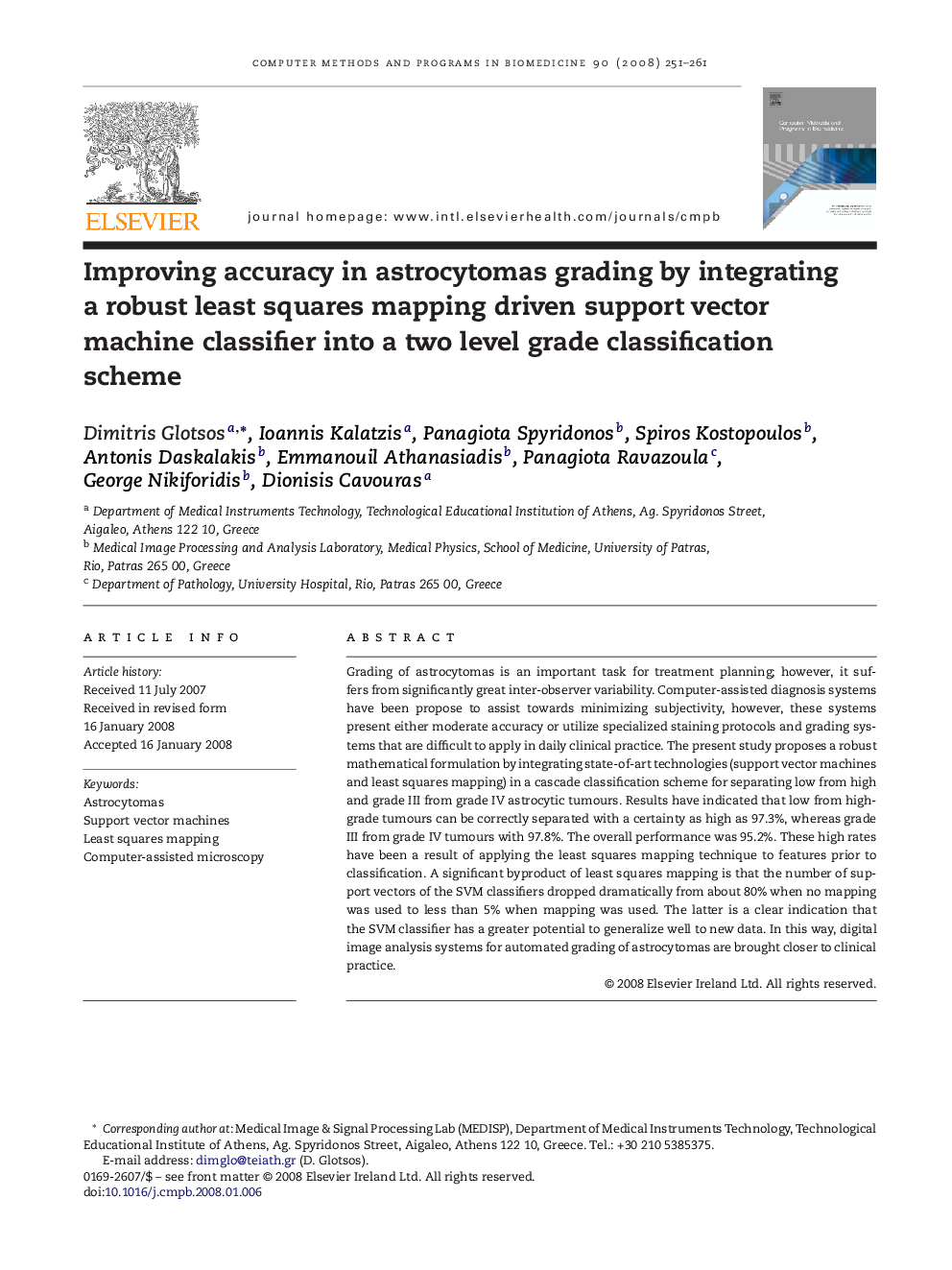| Article ID | Journal | Published Year | Pages | File Type |
|---|---|---|---|---|
| 468183 | Computer Methods and Programs in Biomedicine | 2008 | 11 Pages |
Grading of astrocytomas is an important task for treatment planning; however, it suffers from significantly great inter-observer variability. Computer-assisted diagnosis systems have been propose to assist towards minimizing subjectivity, however, these systems present either moderate accuracy or utilize specialized staining protocols and grading systems that are difficult to apply in daily clinical practice. The present study proposes a robust mathematical formulation by integrating state-of-art technologies (support vector machines and least squares mapping) in a cascade classification scheme for separating low from high and grade III from grade IV astrocytic tumours. Results have indicated that low from high-grade tumours can be correctly separated with a certainty as high as 97.3%, whereas grade III from grade IV tumours with 97.8%. The overall performance was 95.2%. These high rates have been a result of applying the least squares mapping technique to features prior to classification. A significant byproduct of least squares mapping is that the number of support vectors of the SVM classifiers dropped dramatically from about 80% when no mapping was used to less than 5% when mapping was used. The latter is a clear indication that the SVM classifier has a greater potential to generalize well to new data. In this way, digital image analysis systems for automated grading of astrocytomas are brought closer to clinical practice.
